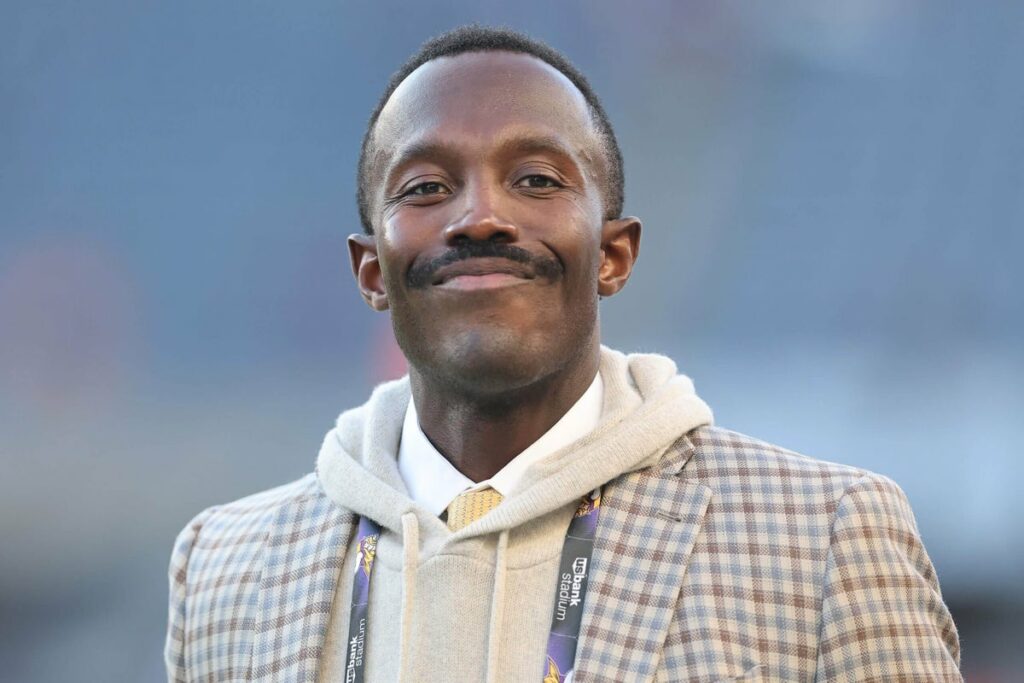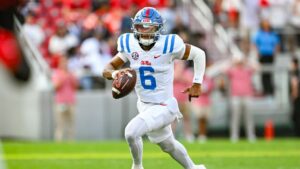The Athletic has live coverage of Vikings vs. Chargers in NFL ‘Thursday Night Football.’
If there is one constant in the way Minnesota Vikings general manager Kwesi Adofo-Mensah operates, it’s in his team’s activity around the NFL trade deadline.
In 2022, Minnesota acquired tight end T.J. Hockenson from the Detroit Lions. The following year, the Vikings fortified their quarterback room with Josh Dobbs in the aftermath of Kirk Cousins’ torn Achilles. Last year, after left tackle Christian Darrisaw tore his ACL, Adofo-Mensah made a move for left tackle Cam Robinson.
Creativity in getting these deals done has been a theme. Each featured some variety of pick swap, pulling a tad from the future for a higher probability of success in the present.
That history is relevant with two weeks until this season’s Nov. 4 trade deadline. At a bare minimum, Adofo-Mensah and the Vikings brass are likely to pursue players who would be advantageous for the present and future.
That said, the team doesn’t have a glaring hole. In previous seasons, whereas the Vikings’ options after Cousins and Darrisaw were drastically lower than replacement level, the top end of the current roster is less porous.
But at the same time, the Vikings aren’t in a position to part with starters for low-round picks. Could they benefit from a more experienced center behind Ryan Kelly, who remains on injured reserve after suffering his second concussion of the season? Definitely. Are there positions with enough of a glut to unload a short-term contributor? It’s doubtful.
All of this is to say we can expect some tires to be kicked, but don’t bank on an addition or subtraction, barring a serious injury. Standing pat is not sexy. For these Vikings, though, it might be the most sensible approach. Here’s more on the drawbacks of a move, one way or the other:
The #Vikings first injury report of Week 8.
The team did not conduct a practice and participation is an estimate. pic.twitter.com/HUQTwAKwj3
— Minnesota Vikings (@Vikings) October 20, 2025
Why it seems unlikely the Vikings will be buyers
Unless you’re targeting a younger player who aligns with your plans for the future, buying is usually confined to those teams with a deep playoff run in sight.
Last year, the Bills got wide receiver Amari Cooper. The Chiefs worked aggressively to get receiver DeAndre Hopkins. Even the Lions got in on the act, sending two picks to the Browns for edge rusher Za’Darius Smith.
Consider the quarterbacks on those three teams: Patrick Mahomes, Josh Allen and Jared Goff. When you possess a proven talent at that position, it’s easy to convince yourself that the future is now.
The Vikings aren’t there — or remotely close to it. Young quarterback J.J. McCarthy has not been available enough for the team to have any grand visions for this season. He has also struggled in the two games he has played. Meanwhile, backup Carson Wentz continues to make poor decisions that cap the offense’s ceiling. Injecting the 2025 Vikings with more talent at the future’s expense would be a shortsighted bet given the role quarterback play occupies in a team’s chances of winning.
There is more to consider here, too. First and foremost, the Vikings’ balance sheet is already bloated. The team is spending $344 million on the current roster, according to Over The Cap, which is the most of any team in the NFL. Ownership reaching further into its pockets when the commitment is already at a commendable level doesn’t track.
Plus, one of the primary reasons the Vikings retained cap space for 2025 was to cover for next season, when they’re projected to be close to $50 million over the cap.
Draft picks are another layer. In going the route of the rookie QB contract, the Vikings are mindful of a particular dynamic. The deeper McCarthy gets into his initial contract, the less excess the Vikings will have from a salary-cap perspective. Offsetting that means hitting on cost-effective players via the draft. The best way to do that? Accumulate as much draft capital as you can to tilt the odds in your favor. That’s why the team approached this spring’s free-agent cycle with multiple compensatory picks in mind.
Why it seems unlikely the Vikings will sell
Adofo-Mensah and head coach Kevin O’Connell are both in their fourth seasons. They overhauled the franchise’s culture. They’ve won double-digit regular-season games twice in three seasons. However, they have not done what matters more than anything: win a playoff game.
Pulling the ripcord — and likely losing consistently down the stretch — would only ratchet up the questions. It would also go against a group of decision-makers that has been open about its belief that getting into the dance as many times as possible gives you the best chance of winning a title.
Even if the uninspiring quarterback play clouds the idea of a run, it’s not in O’Connell’s nature to throw in the towel. The benefits are evident. See: The abundance of Vikings comebacks since he became the head coach.
Chiseling away at the roster’s talent would also mean lessening the developmental environment around McCarthy. The Vikings believed they were cushioning the young quarterback in a way that would allow him to ease into his progression. Stockpiling skill players played a role in that. Spending on the interior of the defensive line did, too. Remove some of the proven players, and you’d be asking more from your young QB.
The selling path might be palatable if the Vikings had more budding youth. They do on the defensive line, which explains the team’s decision to trade defensive tackle Harrison Phillips before the season. Otherwise, the roster is comprised mostly of veterans, and the drop-off between the starters and backups is significant.




